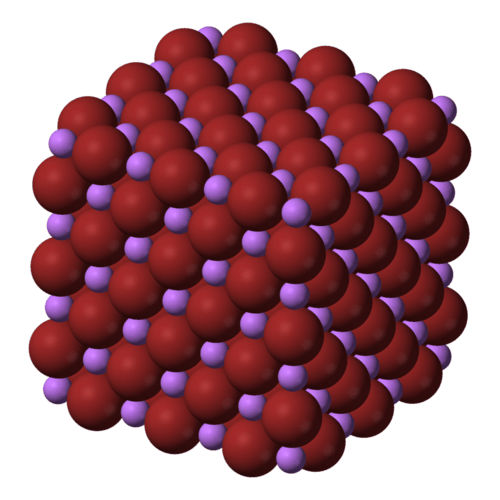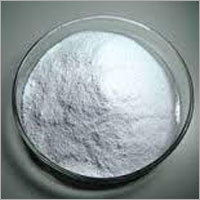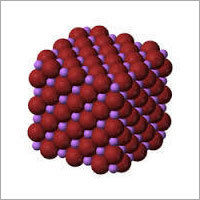GST : 24AAJCA7955Q1ZW

Lithium Bromide
Product Details:
- Application Industrial
- Density 3.46 Gram per cubic centimeter(g/cm3)
- Storage Room Temperature
- Molecular Formula LiBr
- Melting Point 552 C
- Poisonous YES
- Physical Form Powder
- Click to view more
X
Lithium Bromide Price And Quantity
Lithium Bromide Product Specifications
- Room Temperature
- Granules
- 7789-43-7
- Lithium Bromide
- 3.46 Gram per cubic centimeter(g/cm3)
- Powder
- Industrial
- YES
- LiBr
- 552 C
Lithium Bromide Trade Information
- 50 Per Month
- 2-12 Week
Product Description
Our organization is one of the leading manufacturers, exporters, traders, and suppliers of Lithium Bromide. The offered product is the hygroscopic chemical compound of lithium and bromine. This chemical compound is used as a desiccant in certain air conditioning systems. It is prepared by treatment of lithium carbonate with hydrobromic acid. This chemical compound is used as a reagent in organic synthesis, salt in absorption chilling along with water, as a sedative in medicines and in various other industrial applications. This chemical compound is safely processed and packaged in our units equipped with modern machinery under the supervision of skilled professionals.
Lithium Bromide Features:
1. White powder with a bitter taste
2. Soluble in water, alcohol, and glycol
3. Hygroscopic in nature
Lithium Bromide Properties:
1. Density: 3.46 g/cm3
2. Molecular Weight/ Molar Mass: 86.845 g/mol
3. Boiling Point: 1,265 degree centigrade
4. Melting Point: 552 degree centigrade
5. Chemical Formula: LiBr
6. IUPAC name: Lithium bromide
7. CAS Number: 7550-35-8
8. Appearance: White hygroscopic solid
Lithium Bromide Applications:
1. Absorption Refrigeration: Lithium bromide is primarily used as a desiccant in absorption refrigeration systems. In these systems, it absorbs water vapor from the air, creating a concentrated solution of lithium bromide which is then heated to release the water vapor, effectively cooling the surrounding environment. This process is particularly useful in large-scale air conditioning systems, industrial refrigeration, and some types of cooling for electronics.
2. Dehumidification: Lithium bromide solutions are utilized in dehumidification systems to remove moisture from the air. These systems are often employed in industrial settings where controlling humidity levels is critical for processes such as pharmaceutical manufacturing, food processing, and semiconductor production.
3. Chemical Synthesis: Lithium bromide is used in various chemical synthesis processes, including organic synthesis and pharmaceutical manufacturing, as a reagent or catalyst. It can facilitate certain reactions and is valued for its ability to dissolve many organic compounds.
4. Heat Transfer Fluids: Lithium bromide solutions can serve as effective heat transfer fluids in some specialized applications, such as high-temperature heat pumps and solar thermal systems. These solutions have good thermal stability and can transfer heat efficiently.
5. Laboratory Applications: In laboratory settings, lithium bromide may be used in certain experiments or processes, particularly those involving the manipulation of humidity levels or as a solvent for specific reactions.
6. Metal Surface Treatment: Lithium bromide solutions are employed in metal surface treatment processes, particularly for aluminum and its alloys. These solutions can be used for surface cleaning, etching, and passivation treatments.
7. Pharmaceuticals: Lithium bromide has applications in the pharmaceutical industry, both as an ingredient in certain medications and as a reagent in pharmaceutical synthesis processes.
8. Hygroscopic Agent: Lithium bromide is highly hygroscopic, meaning it readily absorbs moisture from the air. This property makes it useful in various applications where moisture control is important, such as humidity indicators and drying agents.
Lithium Bromide FAQ:
1. How is Lithium Bromide Used?
Ans: Lithium bromide is primarily used as a desiccant in absorption refrigeration systems. In these systems, it absorbs water vapor from the air, creating a concentrated solution of lithium bromide which is then heated to release the water vapor, effectively cooling the surrounding environment.
2. What are the Properties of Lithium Bromide?
Ans: Lithium bromide is a white crystalline solid with a high solubility in water. It has a melting point of 552 degree centigrade and a boiling point of 1,267 degree centigrade. It is highly hygroscopic, meaning it readily absorbs moisture from the air.
3. Is Lithium Bromide Safe?
Ans: Lithium bromide is generally considered safe when handled and used properly. However, it is a corrosive substance and can cause irritation to the skin, eyes, and respiratory system upon contact or inhalation. Proper precautions should be taken when handling it, including the use of appropriate personal protective equipment (PPE).
4. What are the Environmental Impacts of Lithium Bromide?
Ans: Lithium bromide can have environmental impacts if released into the environment in large quantities. It is important to handle and dispose of it properly to minimize these impacts. Additionally, lithium extraction for its production can have environmental consequences, although this is primarily associated with lithium mining rather than lithium bromide specifically.
5. Where Can Lithium Bromide Be Purchased?
Ans: Lithium bromide can be purchased from chemical suppliers or industrial supply companies. It is typically available in various grades and formulations depending on its intended use.
6. Are There Any Alternatives to Lithium Bromide?
Ans: There are alternative desiccants available for use in refrigeration and air conditioning systems, such as calcium chloride and silica gel. However, lithium bromide remains a popular choice due to its high efficiency and effectiveness in absorption refrigeration systems.
7. What Precautions Should Be Taken When Using Lithium Bromide?
Ans: When handling lithium bromide, it's important to wear appropriate protective gear such as gloves, goggles, and a respirator to prevent skin and eye irritation as well as inhalation of fumes. It should be stored in a cool, dry place away from incompatible materials and sources of ignition. Spills should be cleaned up immediately following proper procedures outlined in the material safety data sheet (MSDS). Additionally, proper ventilation should be maintained in areas where lithium bromide is used to prevent the buildup of fumes.
Applications
Lithium Bromide is prominently used in industrial settings including as a desiccant in absorption refrigeration systems and in chemical synthesis.
Physical Characteristics
With a molecular formula of LiBr, it is a granule-shaped powder having a melting point of 552 C and a density of 3.46 g/cm.
Safety and Storage
Due to its poisonous nature, Lithium Bromide should be handled with care and stored at room temperature in a safe, secure area.
FAQs of Lithium Bromide:
Q: What is Lithium Bromide used for in industrial applications?
A: Lithium Bromide is utilized as a desiccant in absorption refrigeration systems and in various chemical syntheses due to its hygroscopic properties.Q: How should Lithium Bromide be stored?
A: Lithium Bromide should be stored at room temperature in a dry, well-ventilated area away from incompatible materials.Q: Where can Lithium Bromide be sourced?
A: Lithium Bromide is manufactured, supplied, and exported by numerous traders, predominantly in India.Q: What are the physical properties of Lithium Bromide?
A: Lithium Bromide is a granule-shaped powder with a density of 3.46 g/cm and has a melting point of 552 C.Q: Why is it important to handle Lithium Bromide carefully?
A: Since Lithium Bromide is poisonous, it is crucial to follow safety protocols to avoid health hazards associated with exposure.Tell us about your requirement

Price:
Quantity
Select Unit
- 50
- 100
- 200
- 250
- 500
- 1000+
Additional detail
Mobile number
Email
Other Products in 'Lithium Bromide' category
Back to top






 English
English Spanish
Spanish French
French German
German Italian
Italian Chinese (Simplified)
Chinese (Simplified) Japanese
Japanese Korean
Korean Arabic
Arabic Portuguese
Portuguese